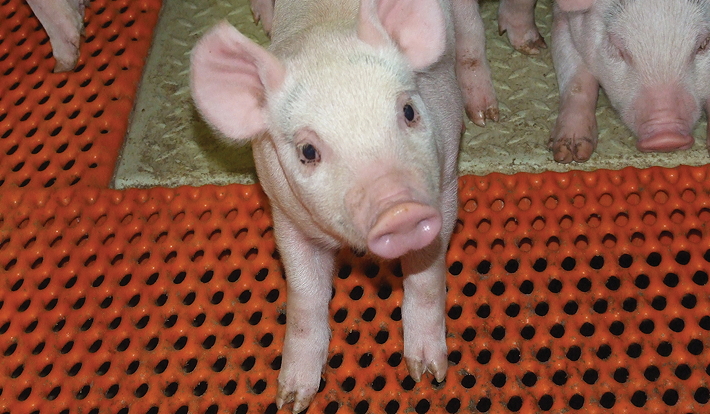Sales of antibiotics for use in animals in the UK have fallen to their lowest level since records began in 1993, dropping by 27% between 2014 and 2016.
The latest UK Veterinary Antibiotic Resistance and Sales Surveillance (VARSS) report, which will be published later today, shows of antibiotics for use in food-producing animals fell to 45mg/kg last year. This compares with 62mg/kg in 2014 and 56mg/kg in 2015 and ensures the industry exceeds the government target of 50mg/kg by 2018 two years early.
Sales of all the highest-priority antibiotics – considered critically important for human health – have also dropped, accounting for less than 1% of all antibiotics sold for use in animals in 2016. This includes an 83% reduction in sales of Colistin.
That industry-wide target was set in the wake of the O’Neill report, published last May, which called for action in human and animal medicine to combat the threat of antibiotic resistance (AMR).
Later today a task force established by the industry alliance Responsible Use of Medicines in Agriculture (RUMA) will publish new targets on antibiotic use for each farming sector.
The NPA welcomed the headline figures from the VARSS report, which, when details are published later today, are expected to show further reductions in antibiotics used by the pig sector. The association said the pig sector was ready to rise to the challenge of meeting the new targets.
Government reaction
The new figures were welcomed by the Government. Defra Minister for Rural Affairs and Biosecurity, Lord Gardiner, said: “The UK is at the forefront of global efforts to tackle antibiotic resistance. The fact we have overtaken our target two years ahead of schedule demonstrates our commitment to preventing the inappropriate use of antibiotics and shows our approach is working.
“Our farmers and vets must be commended for setting an excellent example for others around the world to follow, upholding the UK’s position at the forefront of international efforts to keep antibiotics available for future generations.
“Now we must continue making progress and set our sights on reducing use even further. Ambitious specific reduction targets in different sectors will be yet another positive step towards safeguarding antibiotics.”
The UK’s Chief Veterinary Officer, Nigel Gibbens, said: “These results are immensely positive to see and show the combined efforts of vets and farmers to reduce antibiotic use are paying off. Vets are taking accountability for their prescribing decisions and farmers are investing in disease prevention.
“We need solidarity across the profession; no veterinary professional must offer an easy route to access antibiotics where they are not justified. Tackling antibiotic resistance requires a commitment across all areas of animal health, together with work on human use by colleagues in the medical professions, and our work together to tackle the issue at global level.”
The UK’s Chief Medical Officer, Professor Dame Sally Davies said: “Drug resistant superbugs are not just a problem confined to human health—it is an issue that spans humans, animals and the environment, so we must take a One Health approach to address it. If we act in isolation, we will fail.
“This is a commendable achievement from our agricultural and veterinary sector to reduce the inappropriate use of antibiotics. It shows the entire world what can be done when we join forces and work with focus and passion.
“But we cannot rest on our laurels. This progress demonstrates the commitment is there, but we need to build on this momentum and continue to do more, in every sector, and in every country, to stay ahead of superbugs.”
Major threat
The O’Neill report described AMR as a major threat to modern medicine with estimates suggesting it could be responsible for ten million deaths per year by 2050 and cost the global economy $100 trillion.
In 2013 the UK government launched a strategy to reduce the development and spread of antibiotic resistance in animals and humans, which encouraged more responsible use of antibiotics in human and animal medicine to safeguard them for the future.
The VARSS) report provides the previous year’s data on the quantity of authorised antibiotics for use in animals sold throughout the UK, and results from surveillance programmes looking at antibiotic resistance in animals. It will be available here from 11am




